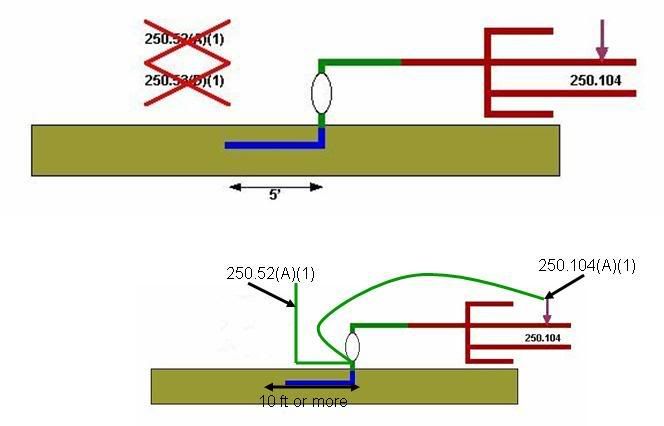LarryFine
Master Electrician Electric Contractor Richmond VA
- Location
- Henrico County, VA
- Occupation
- Electrical Contractor
Interesting that, while I have never had concern for making sure the hot was bonded to the cold, I get a twinge of a problem with JW's "250.104(a)(1)" connection point, on the 'load' side of the water heater.jwelectric said:
Here nothing else is required.
In this scenario the water pipe is not part of the electrode system. There is no requirement to bond around anything outlined in 250.104(A)(1) therefore no jumpers are required anywhere on this system.
I've always (that makes it the right way, right?) made sure that the bond was to the cold-water supply pipe, and I guess a big part of why is that removal of the water heater doesn't compromise the effectiveness of the connection.
Sounds like a conflict, doesn't it? :roll:


